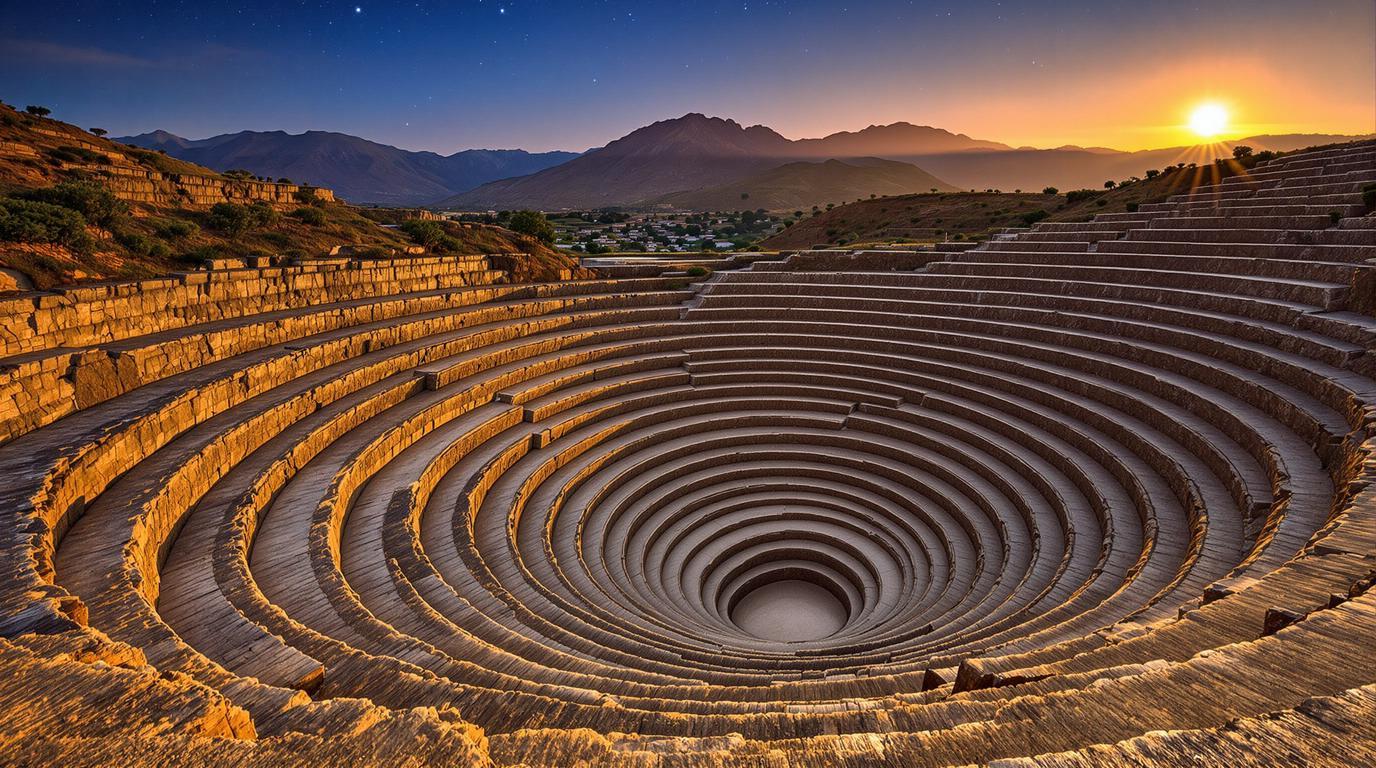Did you know that the Sacred Valley of the Incas was intentionally designed to mirror celestial constellations? This 60-mile stretch of fertile land in Peru’s Andean highlands wasn’t just the agricultural heartland of the Inca Empire—it was their cosmic connection to the heavens. At precisely 13.3248° S and 72.0864° W, this extraordinary landscape continues to reveal archaeological secrets that challenge our understanding of pre-Columbian engineering.
Where terraced mountains became agricultural laboratories
The most mind-bending site in the Sacred Valley is undoubtedly Moray—a series of concentric circular terraces descending nearly 500 feet. What appears decorative served as an ingenious agricultural experiment station. Each terrace creates its own microclimate, with temperature differences of up to 27°F between top and bottom levels.
“The Incas weren’t just farmers; they were master botanists conducting sophisticated experiments centuries before modern agricultural science,” explains Dr. Elena Vasquez, archaeobotanist at Cusco University. “These terraces allowed them to simulate different growing conditions found throughout their empire.”
The unexpected salt pans that predate the Incas
Just a short hike from Moray lies one of Peru’s most photogenic yet least understood sites: the Salineras de Maras. These 3,000+ salt evaporation ponds cascade down a mountain slope in a dazzling geometric pattern. What’s remarkable is that they’ve been continuously harvested since pre-Inca times using the same techniques—fed by a subterranean salt spring via an intricate channel system.
Early morning photographers often wait months for the perfect conditions at these salinas, similar to how dedicated photographers seek the perfect dawn light at Machu Picchu.
Ollantaytambo: The town where Incas still live
Unlike other archaeological zones, Ollantaytambo remains a living Inca town. Its precisely cut stone buildings and intricate water channels continue functioning after 500+ years. The massive fortress that dominates the hillside was also where Inca emperor Manco Inca temporarily defeated Spanish forces in 1536—the only successful large-scale native victory against the conquistadors.
“My house stands on foundations laid by my ancestors twenty generations ago,” says local guide Carlos Huaman. “When tourists visit, they’re not just seeing our past—they’re experiencing our living heritage.”
Beyond Machu Picchu: The valley’s hidden treasures
While most travelers rush through the Sacred Valley en route to Machu Picchu, seasoned explorers know its quieter corners rival the famous citadel. The rarely-visited ruins of Huchuy Qosqo (“Little Cusco”) offer panoramic valley views after a stunning mountain trek that feels worlds away from tourist crowds—reminiscent of how undiscovered coastal gems provide relief from overtourism.
Pisac: Where ancient spirituality meets vibrant commerce
Pisac’s Sunday market explodes with color against its backdrop of imposing Inca ruins. What distinguishes this experience from other markets is its authenticity—locals still trade goods using traditional methods alongside tourist-oriented stalls. This cultural richness often draws comparisons to Portugal’s historical trading centers where commerce and spirituality intertwine.
The river that shaped an empire
The sacred Urubamba River (called “Willkamayu” or “Sacred River” by the Incas) threads through the valley like a liquid highway. Its raging waters provided both transportation and spiritual significance, similar to how natural migration routes shape both practical and spiritual aspects of a culture.
For adventure seekers, white-water rafting these ancient routes offers thrills alongside historical immersion. The class III-IV rapids churn beneath cliff-side ruins few land-bound travelers ever glimpse.
Where ancient textile traditions thrive
In Chinchero, women’s weaving cooperatives maintain techniques spanning back to Inca times. Their intricate textiles reveal complex mathematical patterns and astronomical symbolism, using natural dyes from plants, insects, and minerals to create vibrant colors that have endured for centuries.
The combination of ancient tradition with stunning natural beauty gives the Sacred Valley a sensation similar to authentic coastal towns where tradition and natural beauty coexist—except here, those traditions span back thousands of years amid the profound silence of Andean peaks.
